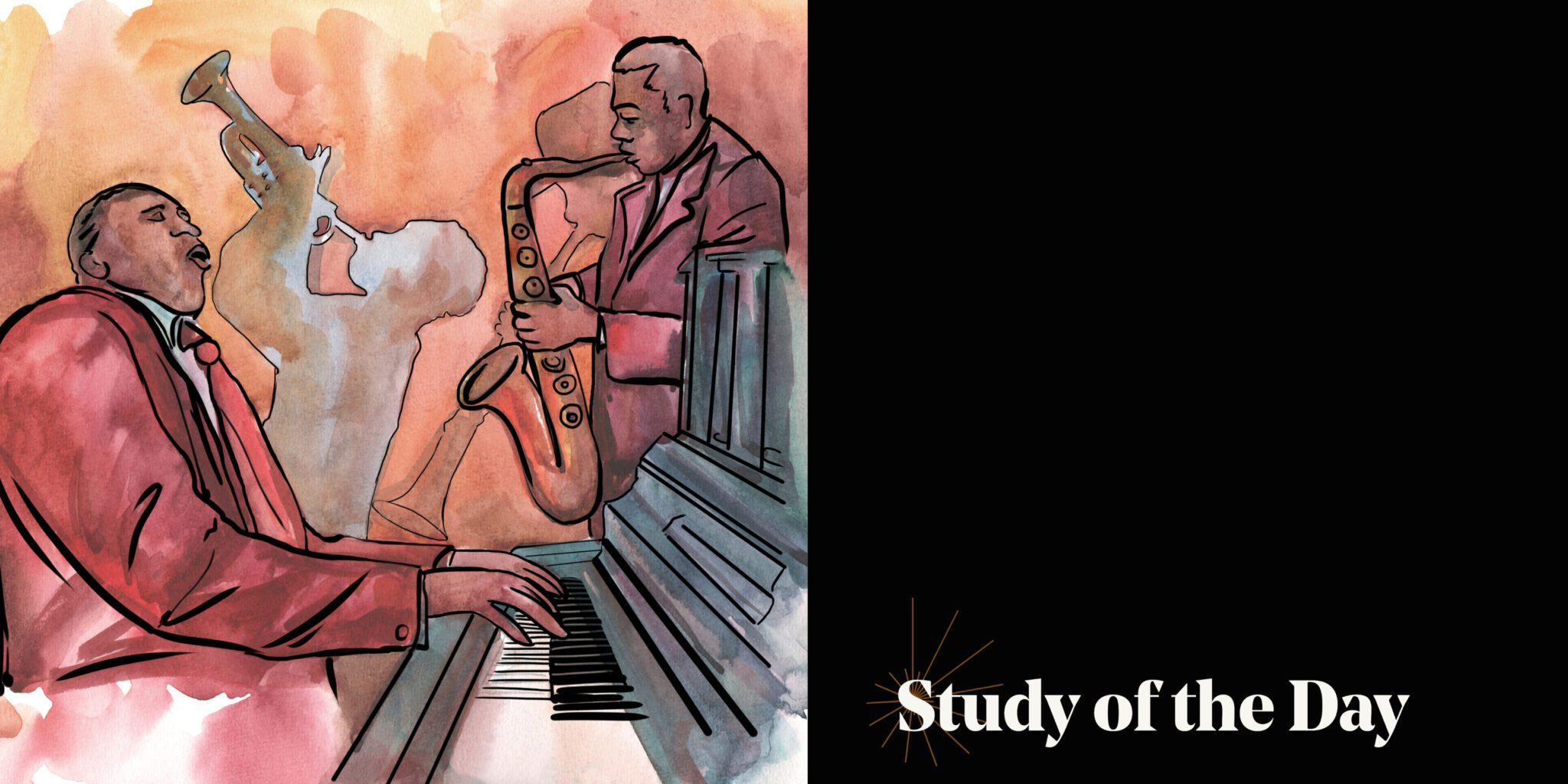In our Study of the Day feature series, we highlight a research publication related to a John Templeton Foundation-supported project, connecting the fascinating and unique research we fund to important conversations happening around the world.
Plato, in the Republic, gives the best-known explanation of the Greek theory of musical modes: “The musical modes differ essentially from one another, and those who hear them are differently affected by each. Some of them make men sad and grave,” he wrote, “another, again, produces a moderate or settled temper.” Today, as ever, we perceive music as having psychological and social effects. We describe songs as happy or sad, and note their effects on us alone and in groups, both as music-listeners and music-makers. In the journal Music and Science, Tal-Chen Rabinowitch, an assistant professor at the University of Haifa’s School of Creative Arts Therapies, offers a helpful overview of the history of musical-social theories, and the current state of research, including several compelling observations about how music can change how people relate to one other.
Music Puts Us in Sync
A fascinating series of studies have looked at the ways that music — and other forms of synchronous, repetitive movement — affects people from an early age. At 14 months, children who have been gently bounced in sync with an adult are more willing to later extend help than those who received out-of-sync bounces. After older children sing and dance together, other forms of cooperation increase. Group singing also increases children’s generosity in the classic prisoner’s dilemma game. A synchronous tapping exercise improved 8-year-olds’ assessment of their closeness to each other. With adults, a number of studies show that synchronization exercises can improve mutual attentiveness, and build feelings of rapport and compassion. All of these suggest that rhythms like those in music can bring people into forms of alignment that persist even after the beat dies down.
Music Helps Foster Unity Amidst Difference
As human musical abilities evolved, one of their key advantages may have been in the realm of conflict resolution. Participating in music-making and music-listening brought early groups of humans into sync, as noted above, and may have also given them the necessary space to retain individual differences while experiencing forms of unity. Describing her advisor Ian Cross’s work on the evolutionary nature of music-making, Rabinowitch writes that, though language offers tools for using persuasion to alleviate conflict, its precision may sometimes work against it. Music, on the other hand, is more open to interpretation, “allowing people of different views and attitudes to collaborate and share experiences while leaving irresolvable issues behind.”
Music Nurtures Individual and Shared Leadership
An orchestra is generally improved by having a conductor, and even in smaller-scale approaches to music-making it is easy for leader-follower dynamics to emerge. But Rabinowitch notes that music, particularly in its more improvisatory forms, can exhibit much more fluid forms of leadership, like jazz soloists taking turns. Studies using a dramatic improvisation game found that the improv flowed more smoothly when a leader wasn’t designated ahead of time. When musicians improvise, they draw on longstanding tradition and hours of practice to be able to be “in the moment,” calling out and responding to each other as the song advances.
But, Tunesmiths Beware
What Plato believed based on his study of the musical modes, the 20th-century American ad firm McCann Erikson also grasped. When, in 1971, they filmed a diverse and smiling crowd on a hilltop lip-syncing the lyrics “I’d like to teach the world to sing / in perfect harmony” — before segueing into advertising Coca-Cola. The song was catchy enough that listeners called in to demand that radio stations replay the ad. Music has the power to tap into our prosocial yearnings, and it can yield prosocial results. Its power, of course, can also be used by people who want to sell us something. “‘Maximizing’ a tool such as music to effect social change,” Rabinowitch writes, “requires careful examination of its potential uses.”
Still Curious?
Read the article “The Potential of Music to Effect Social Change,” from Music and Science.
